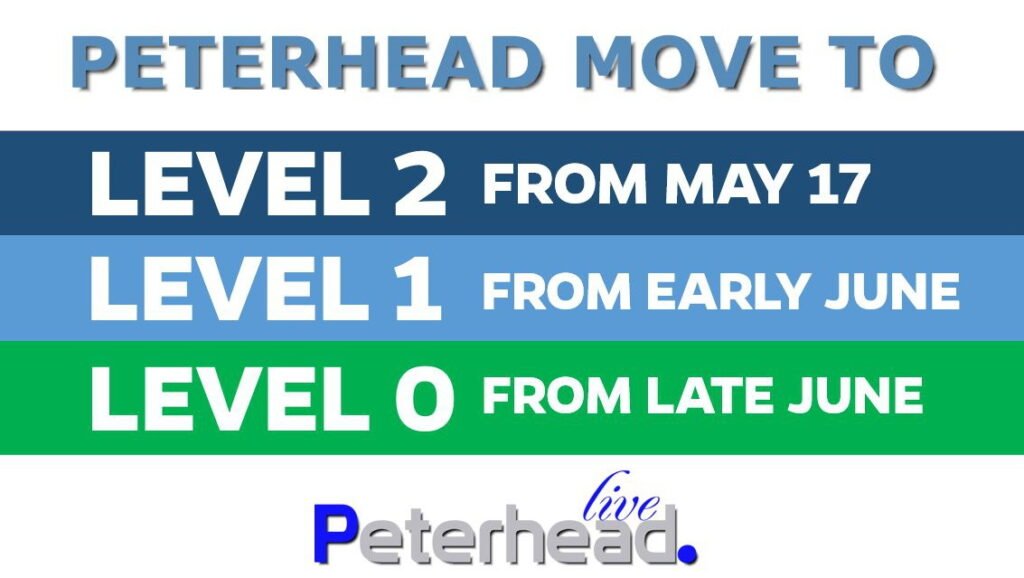Travel restrictions update
Travel restrictions update between Scotland and three local authority areas in England
Moray will be the only local authority area to change protection level as it moves to Level 2 at 00.00 tonight, 21 May 2021, following improvement in coronavirus (COVID-19) prevalence.
Data available this morning showed that in the last week case rates in Moray have fallen sharply, from 98 per 100,000 to 37 per 100,000, and cases of the April-02 variant – the so-called Indian variant – are lower there than in other parts of the country.
Travel restrictions update between Scotland and three local authority areas in England will be restricted from 00:01 on Monday 24 May 2021 due to sustained high prevalence of the virus in Bedford, Bolton and Blackburn with Darwen.
This will be reviewed in a week along with the other measures announced today.
Travel restrictions update – People can travel freely throughout most of Scotland and between most of Scotland and the rest of the UK, other than to, or from, Glasgow. Because Glasgow remains in Level 3.
Nicola Sturgeon said:
“The situation in Moray has improved very significantly – cases and test positivity have fallen markedly and the April-02 variant does not seem to be as commonly present as in Glasgow and some other parts of the country. I can therefore confirm that Moray will now move down to Level 2, taking effect from midnight tonight. This has been made possible by the efforts of local public health teams, their partners, and of course the public – and I am grateful to all of them.

“Extensive public health measures have been deployed in Glasgow city, including enhanced testing and vaccination in the areas with the highest rates of COVID – especially the G41 and G42 postcodes – and enhanced contact tracing has been put in place. Despite all of the efforts that have been made in the last 10 days, however, cases in Glasgow are still rising and we are fairly certain the increase is being driven by the April-02 variant. We are confident that the major public health efforts which are underway will be effective – and that they will bring levels of the virus back under control – but they need a bit longer to do that.
“We also need a bit more time to be more confident that vaccination will stop rising case numbers today becoming sharply rising hospital and severe illness numbers a couple of weeks from now.
“I know how unwelcome Glasgow remaining in Level 3 is for individuals and businesses, but I genuinely hope it will not be for too much longer, and all of us who do live in Glasgow can play our part in getting this under control as soon as possible.
“While the case rates per 100,000 in Glasgow and East Renfrewshire look similar, the total number of cases in East Renfrewshire – because it’s a smaller area – is significantly smaller than in Glasgow. More importantly, many more of the cases that have been reported in the last week in East Renfrewshire can be traced to specific household clusters than is the case in Glasgow, where transmission appears to be much more widespread. That means we think strong and targeted public health measures have more of a chance of stemming the rise, without the need to use wider restrictions.
“We know there are particularly serious outbreaks of the April-02 variant in three specific English local authority areas – Bedford, Bolton, and Blackburn with Darwen. For that reason, from Monday onwards, we are imposing hopefully temporary Travel restrictions update between Scotland and those three local authority areas in England. If you are planning to visit friends or relatives, or to stay in those areas, you must delay your visit. We hope that these rules and guidelines will not be in place for very long, but at the moment they are a further way of reducing the risk that people will bring the April-02 variant into Scotland from those locations.”
Level 2 restrictions will apply across all of mainland Scotland from midnight tonight 21 May 2021, with the exception of Glasgow City local authority area. Travel to, and from, Glasgow continues to be prohibited other than for permitted reasons.
Coronavirus (COVID-19) protection levels: what you can do – gov.scot














